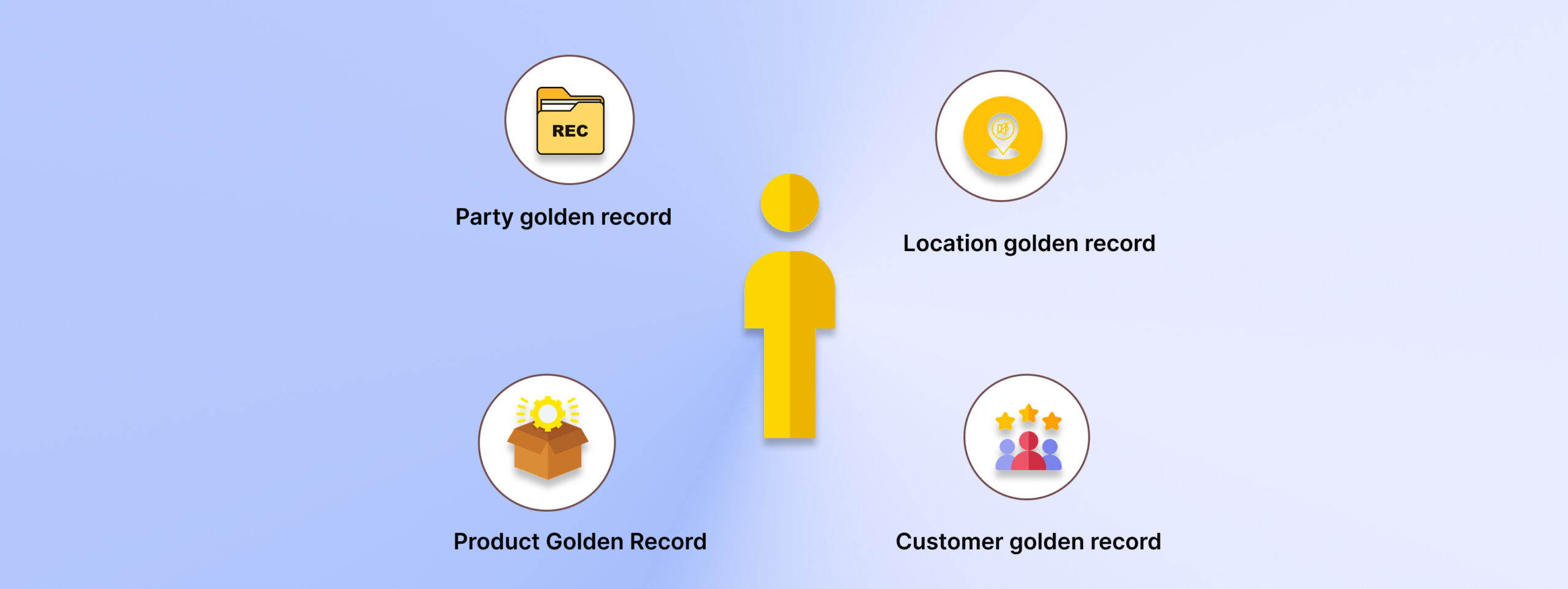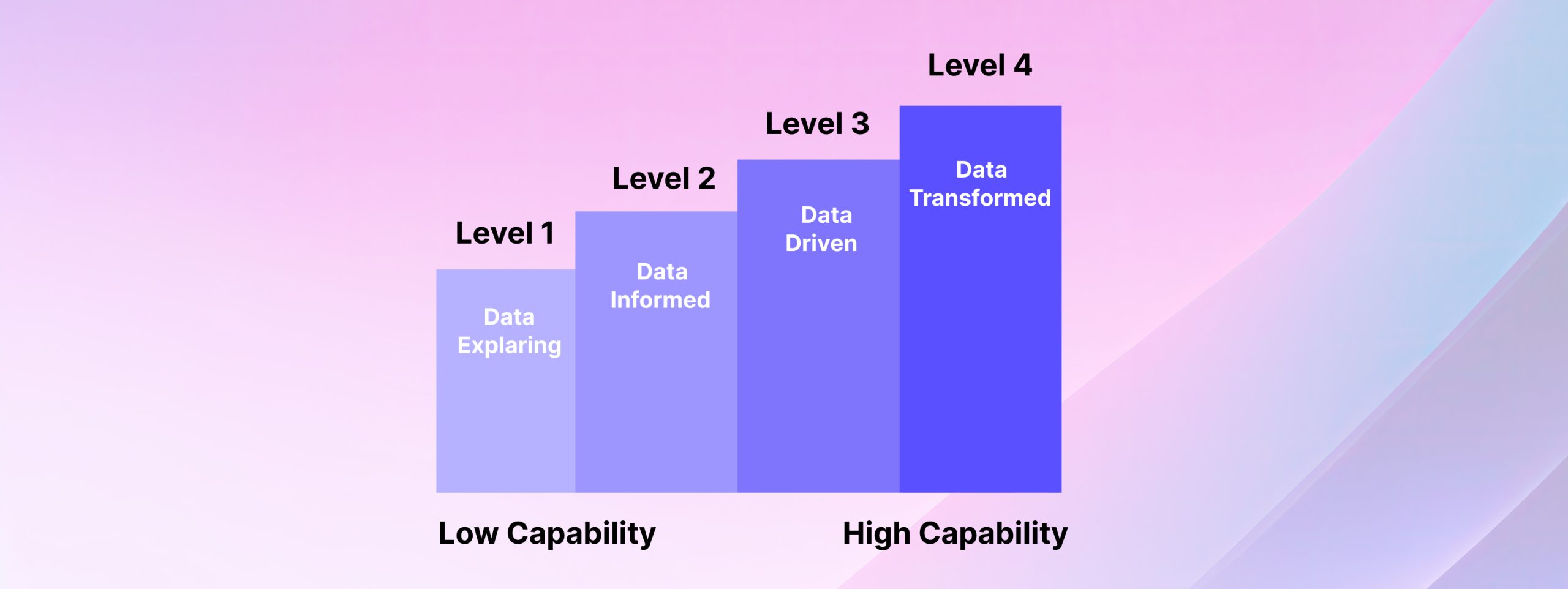In This Article
From being unaware to reaching the data maturity stage, it takes a systematic jump that builds over time. Yes, we are talking about the steps of becoming a data-mature company.
You have not become a mature person in one day. After you were born, you went through a lot of human experiences and dealt with your natural emotions. Thereafter, you become a man of words and wise, per se, mature. Right?
The same thing happens with organizations to become data mature. With time, they implement things, adopt things & grow. However, there are some set rules that can help organizations to become mature (say, data mature). It’s a step-by-step process.
We are going to talk about those data maturity steps here. Are you ready?
Checklist to become data mature
When organizations prioritize data over anything when it comes to making decisions, you can say those organizations have truly achieved data maturity. However, the actual reality is somewhat different.
At present, nearly 70% of the organizations are actively involved in collecting relevant data to integrate into their decision-making process. But only 30% of them can make that happen. There’s a huge vacuum that exists between strategizing and implementing.
Developing data maturity within the organization is possible when you follow the right way. Here is your checklist that can provide you with a roadmap for assessing your organization’s data maturity level. Keep following them.
1. Define your goals and objectives
Why does your organization want to gain data maturity? You need to answer this specific question seriously. Clearly mentioning the purpose of your data maturity can help you lock in your desired outcomes.
To identify business goals, you can consider checking a data maturity assessment. It helps you fix your goals based on different metrics of data maturity. Enhancing regularity compliance and bringing up new technology like AI, you must consider while framing your goals. Besides goal finalization, you also have to define the scope of this data maturity adoption. It means you have to evaluate some areas of data management to find the scope.
Here, you can evaluate various data management things like data governance, data quality, data architecture, data usage, data integration, and other things.
2. Choose your framework
Select a suitable data maturity framework that can gel with your organization’s data structure well. The goals and scopes you set, your selected framework should be aligned with them.
Earlier, we discussed three stages of data maturity. You can refer to that to understand where your organization stands. Evaluating which stage of data maturity your organization is currently in can clear up all the mess. However, reaching the “advanced” stage should be your goal here, and your operations must favor that. If you’re at the beginner stage, you need to focus more on hitting the intermediate stage. And then, you can incorporate advanced methods.
Remember, each stage of data maturity has some specific characteristics and uniqueness. You need to identify them and choose the framework accordingly.
3. Evaluate your capabilities
A thorough assessment of the current data management policies of your organization is important here. You need to assess the capabilities of your organization to adopt data maturity. To proceed with that, you can check;
🔹How data is getting collected from different departments
🔹Review data policies, metadata management tactics, and other data documentation
🔹Check whether the organization follows all data quality parameters, or if they have ignored them.
Overall, evaluating your capabilities checks the accuracy, consistency, completeness, and timeliness of your data.
4. Assess your resources
After you’re done with the capability assessment, now comes the resource assessment part. Here, you need to evaluate the organizational factors that influence the data maturity of your organization. It revolves around three things, which are
5. Check maturity levels across your system
When it comes to evaluating data maturity level, the first thing that comes to mind is data governance. Check the data governance level of your organization and the specific practices that your organization follows for maintaining data governance. Identify the key strengths as well as weaknesses to map the current capabilities.
6. Develop KPIs and set standards
There should be some Key Performance Indicators (KPIs) to measure the data maturity level. You can set standards in your data maturity level with them. Allotting scores to each benchmark can help to improve the entire situation and smooth the data maturity journey.
7. Find gaps and opportunities
During the entire assessment, you can find gaps as well as some windows of opportunity to fill the gaps. In most cases, these gaps originated from a lack of establishing data governance protocols or insufficient data literacy within the organization.
8. Laid out the roadmap to achieve data maturity
Now, at this stage, you are having everything written down as you have all the negatives and positives. So, you have to lay out the roadmap to achieve data maturity. Break the entire plan into small pieces and allot short-term as well as long-term projects. Set realistic goals to achieve success in real-time and prioritize tasks to achieve everything which are important.
9. Gain stakeholder confidence
An organization cannot become data mature without any support from its stakeholders. From people working within the organization to the external people who do business with the organization, let everyone know you are on a data maturity journey.
10. Implement and monitor
Lastly, monitor your data maturity plan constantly to check the progress. If it feels pressure on your internal team to do so, you can outsource data processing services to manage everything. From evaluating data governance parameters to ensuring the smooth flow of data into operations, a data-mature company is a pro at everything. To become such a company, follow and implement data maturity plans with the best measures.











